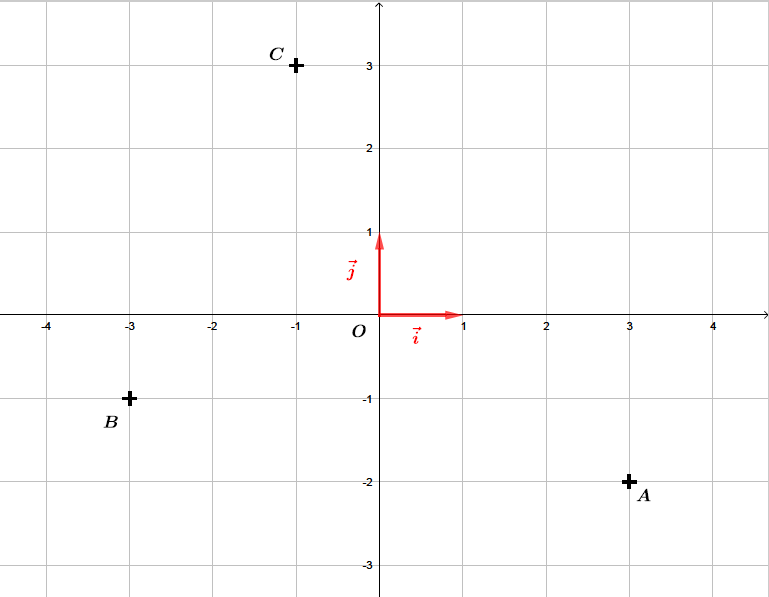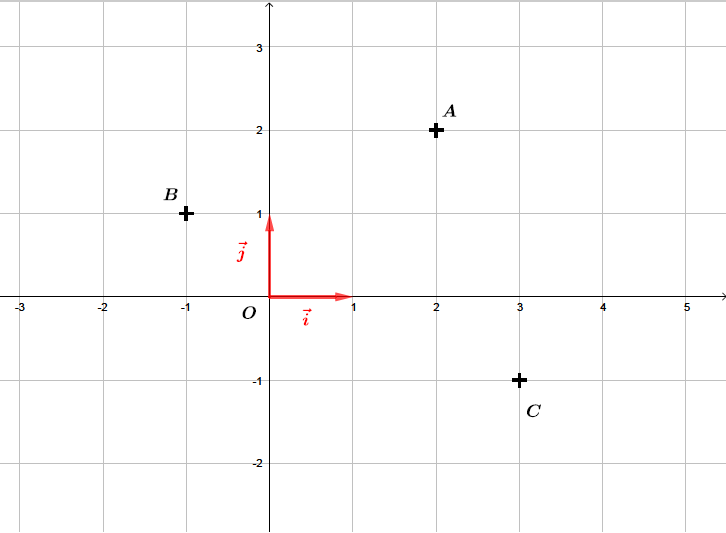Qui aura 20 en maths ?
💯 Le grand concours 100% Terminale revient le 31 janvier 2026 à l'ESIEA Paris !Découvrir →
Nouveau
🔥 Découvre nos fiches d'exercices gratuites avec corrections en vidéo !Accéder aux fiches →
Produit scalaire : définition analytique - Exercice 1
5 min
10
Question 1
On considère un repère orthonormé . Calculer : 

Correction
Dans le repère, nous pouvons lire facilement les cordonnées des points. Nous avons donc , et .
- Dans un repère orthonormé , le produit scalaire de deux vecteurs et de coordonnées respectives et est égal à :Commençons par calculer les vecteurs et
et .
Il en résulte que :
Question 2
On considère un repère orthonormé . Calculer : 

Correction
Dans le repère, nous pouvons lire facilement les cordonnées des points. Nous avons donc , et .
- Dans un repère orthonormé , le produit scalaire de deux vecteurs et de coordonnées respectives et est égal à :Commençons par calculer les vecteurs et
et .
Il en résulte que :
Dans cette situation, cela signifie que les vecteurs et sont orthogonaux. Il en résulte donc que le triangle est rectangle en .
Signaler une erreur
Aide-nous à améliorer nos contenus en signalant les erreurs ou problèmes que tu penses avoir trouvés.
Connecte-toi ou crée un compte pour signaler une erreur.